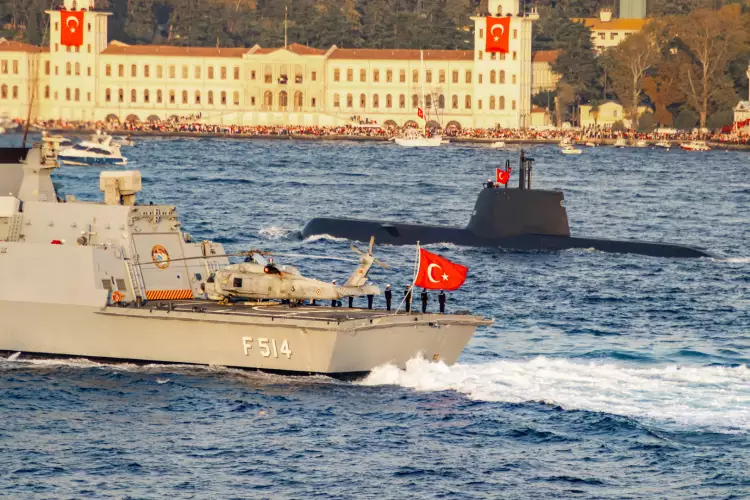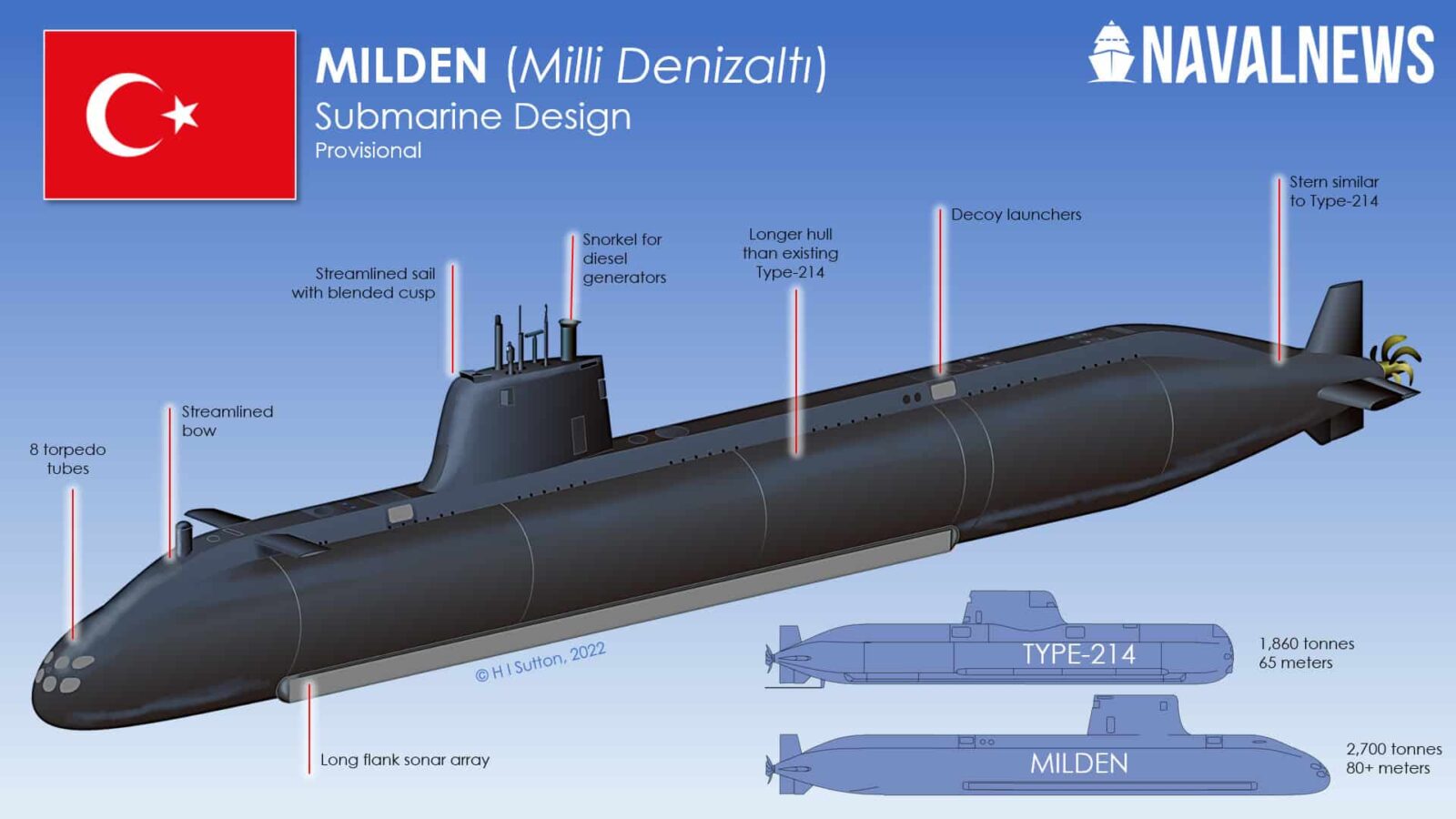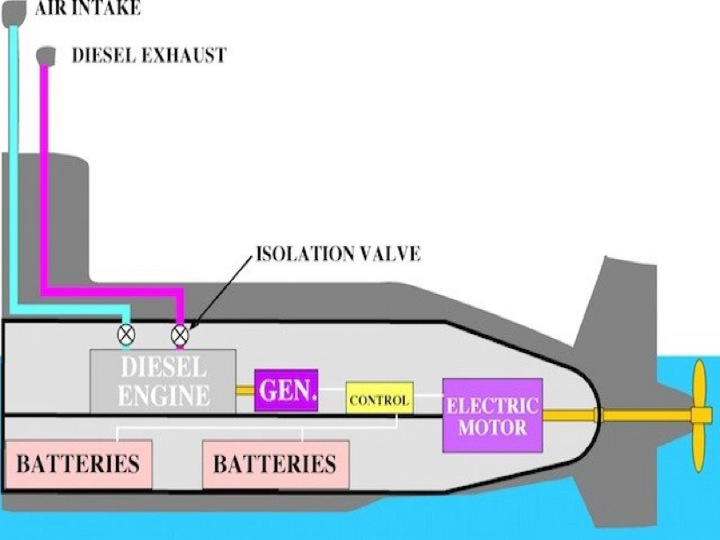Türkiye commissions TCG Piri Reis submarine with AIP tech
 Turkish President Recep Tayyip Erdoğan, Ministry of National Defense Yaşar Güler and TCG Pirireis. (AA Photo)
Turkish President Recep Tayyip Erdoğan, Ministry of National Defense Yaşar Güler and TCG Pirireis. (AA Photo)
In a significant milestone, the Turkish Naval Forces Command has commissioned its first submarine, TGC Piri Reis, equipped with Air Independent Propulsion (AIP) technology. This marks the introduction of a critical capability that enhances the operational stealth and endurance of the naval forces.
This advanced system allows submarines to remain submerged for extended periods without the need for snorkeling, thereby minimizing the risk of detection – an essential factor for submarine operations.
Importance of stealth in submarine operations
Submarine warfare is fundamentally based on secrecy. A submarine’s ability to remain undetected is paramount; even the mere presence of an enemy submarine can delay strategic military operations and disrupt the movement of crucial convoys.
Submarines rely on maintaining their secrecy to ensure safety and capitalize on the element of surprise during attacks. However, traditional submarines powered by internal combustion engines require oxygen to function, forcing them to surface periodically. These moments of surfacing are when submarines are most vulnerable to detection and attack.

To address this vulnerability, AIP systems have been developed. These advanced systems enable submarines to operate for extended periods without needing to surface, thereby enhancing their stealth and significantly reducing the risk of exposure to enemy forces.
The threat posed by an unseen submarine often necessitates the deployment of anti-submarine warfare (ASW) assets, significantly increasing the operational costs for the opposing force.
Diesel-electric submarines vs. nuclear submarines
Submarines are generally classified based on their propulsion systems. Diesel-electric submarines (SSKs), which make up the majority of the world’s submarine fleet, are known for their quiet operation.
However, these submarines must periodically snorkel to recharge their batteries, exposing them to the risk of detection by enemy forces. On the other hand, nuclear-powered submarines (SSNs) can remain submerged indefinitely but are inherently noisier due to their reactors and associated systems.
Role of air independent propulsion
AIP technology bridges the gap between diesel-electric and nuclear submarines. It allows conventional submarines to recharge their batteries without surfacing, thereby maintaining their stealth.
While AIP-equipped submarines cannot match the indefinite underwater endurance of nuclear submarines, they can stay submerged for significantly longer periods than their diesel-electric counterparts – often up to one to two weeks – while retaining the low noise signature that makes SSKs so effective.

Strategic implications of using AIP on Piri Reis submarine
With the addition of AIP technology, Türkiye now joins a select group of nations capable of fielding submarines with enhanced operational flexibility and survivability.
The Turkish navy currently operates one AIP submarine, with plans to increase this number to six by 2029 as more Reis-class submarines enter service. By the mid-2030s, Türkiye also aims to have 10 AIP submarines, including the upcoming domestically built MILDEN-class.

Why AIP is necessary for navies
The primary advantage of AIP systems is their ability to allow submarines to operate without needing to surface, thereby avoiding detection. This capability is particularly crucial in the face of modern ASW capabilities, which include advanced radar systems and diesel sniffers that can detect a submarine’s exhaust emissions. AIP ensures that Türkiye’s submarines can remain a persistent and stealthy threat to any adversary, providing a strategic edge in naval operations.

Types of air independent propulsion systems
There are several types of AIP systems, including:
- Closed cycle diesel engines: Utilize stored liquid oxygen to run a diesel engine while submerged.
- Closed cycle steam turbines: Use ethanol and oxygen to generate steam for propulsion.
- Stirling cycle engines: Convert heat into mechanical energy using an external heat source.
- Fuel cells: Convert chemical energy from a fuel into electricity through a chemical reaction.

Each system has its advantages and limitations, but all serve the primary function of reducing the need for submarines to surface, thereby enhancing their stealth and operational endurance.
AIP capable submarines in region
In the Eastern Mediterranean, several countries already operate AIP-equipped submarines, including Greece and Israel.
Greece has four Papanikolis-Class (Type 214) and one HS Okeanos AIP submarines, while Israel operates Dolphin-II class AIP submarines. Türkiye’s expansion of its AIP submarine fleet is expected to shift the regional naval balance in its favor.



